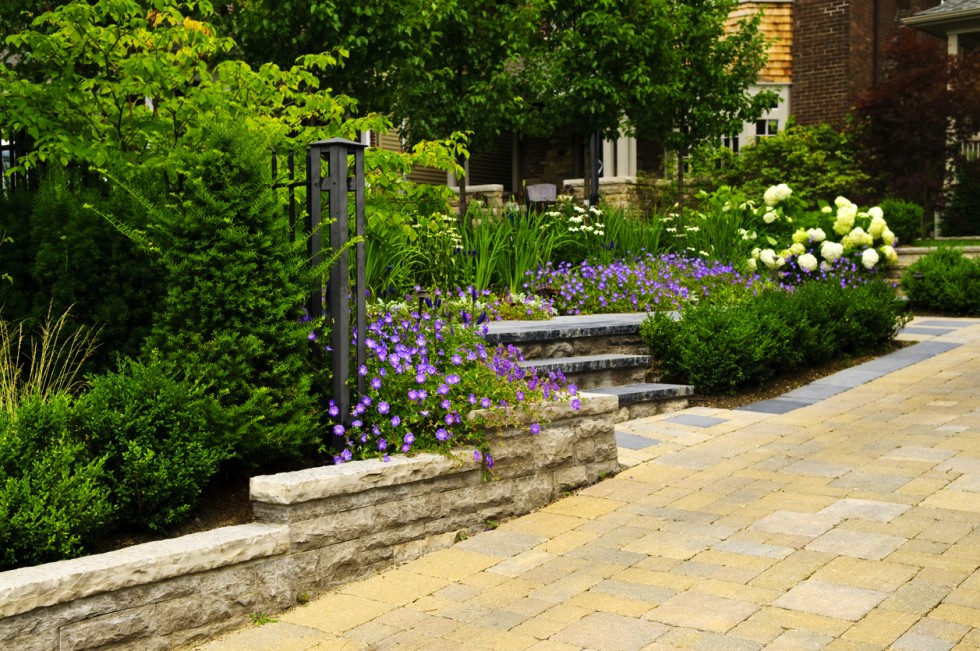A retaining wall can serve a practical and aesthetic function in your landscape design. These sturdy structures can transform your outdoor space from preventing soil erosion to creating a layered garden structure. If you’re considering building your own retaining wall, here’s a detailed guide to help you through the process. We’ll also discuss how retaining wall steel posts can provide robust support and why self-storage can be a helpful resource during your project.
A Step-by-Step Guide to Building Your Own Retaining Wall
1. Plan Your Retaining Wall
The first step in building a retaining wall is planning. Consider the wall’s size, location, and purpose. Will it be a small garden feature, or will it serve a more significant role in preventing soil erosion? The answer will dictate the materials you need and the wall’s design. Once you’ve determined your needs, sketch your landscape, marking the intended location of your retaining wall. This visual guide will assist you in calculating material quantities and envisioning the finished product.
2. Gather Your Materials and Keep Them Organized
Based on your plan, gather the necessary materials. Retaining wall steel posts are an excellent choice for providing the strong support your wall will need to hold back the soil. They are durable, versatile, and can withstand the elements. Depending on your preference, you’ll also need materials for the visible part of your wall—this could be timber, stone, or concrete blocks.
3. Prepare the Ground
After marking out the wall’s location, it’s time to prepare the ground. Dig a trench around twice the width of your wall material and deep enough to accommodate the height of your first layer plus an additional 50mm for a compacted gravel base. The trench should have a firm, even base to ensure the stability of your wall.
4. Lay the Foundation
Next, fill the trench with a layer of gravel and compact it using a tamper. This creates a solid foundation for your wall. Your first wall material layer will sit on this foundation, so ensuring its level is crucial. Moreover, you will want to install a geofabric behind the wall to prevent moisture from seeping through and weakening the structure.
5. Install Retaining Wall Steel Posts
Now, it’s time to install your retaining wall steel posts. These should be placed at intervals based on the manufacturer’s recommendations, generally around 1.2 to 1.8 meters apart. The posts should be set deep enough into the ground to ensure stability, usually around one-third to half the above-ground wall height. There are various methods for installing steel posts, and the one you choose will depend on your needs. For instance, concrete footing may be necessary for larger walls, but post spikes can provide enough support for a small wall.
6. Build the Wall
Start building your wall from one end, placing your chosen wall material between the steel posts. Use a spirit level to check each layer’s evenness, adjusting as necessary. As you build, backfill behind the wall with gravel to improve drainage and stability. Once your wall is complete, add a top layer of finishing material, such as stone or slate. This will give your retaining wall a modern look and protect the underlying structure from weathering.
7. Finishing Touches
Once your wall is at the desired height, you can add finishing touches. This might involve capping the wall with flat stones for a polished look or planting some trailing plants to soften the wall’s appearance. Your retaining wall is now ready to do its job and keep your garden looking neat and tidy. Taking the time to properly design, prepare, and build your wall will ensure it stands the test of time.
A Few More Tips To Keep In Mind
1. Make sure you check local building regulations before starting your project.
2. Consider adding drainage pipes to the wall to ensure water is diverted from the structure and your garden beds.
3. When working with retaining wall steel posts, safety should be a priority. Wear protective gear such as gloves and goggles to protect yourself from sharp edges.
4. As your materials pile up, you might find your space cluttered. This is where self-storage comes into play. Renting a self-storage unit can keep your property tidy and safe, allowing you to store your materials and tools when not in use. This is particularly useful for longer-term projects or when dealing with larger quantities of materials.
5. Have a plan in place before beginning construction and make sure you follow the manufacturer’s instructions.
6. Regularly inspect your wall for any signs of damage or shifting and take action promptly to ensure its stability.
7. Lastly, don’t be afraid to enlist help, especially if you’re dealing with large or complex walls.
“With these tips in mind, you’re now ready to start building your retaining wall!”
Building a retaining wall is a tedious but rewarding project. You can create a beautiful and functional feature in your landscape by carefully planning, selectin sturdy materials like retaining wall steel posts, and utilizing resources like self-storage. Remember, patience is key—take your time to ensure each step is done correctly, and soon enough, you’ll have a stunning retaining wall to enhance your outdoor space.






I recently took on a project to build a retaining wall in my backyard, and it was quite the journey. Initially, I underestimated the complexity, thinking it was a straightforward task. However, I quickly realized the importance of thorough planning and preparation.
First, I sketched out the design and marked the wall’s location in my yard. Gathering materials was next, and I chose concrete blocks for their durability. After digging a trench and laying a gravel base, I started setting the blocks, ensuring each layer was level. I installed drainage pipes behind the wall to prevent water buildup, which is crucial for the wall’s longevity.
One of the trickiest parts was installing the steel posts for added support. I followed the manufacturer’s recommendations for spacing and depth, using concrete footings to secure them. Building up the wall layer by layer was physically demanding, but seeing it take shape was incredibly rewarding.
During the project, I realized the need for extra storage space for materials and tools, so I rented a self-storage unit. This kept my yard organized and made the process more manageable.
Now, my retaining wall not only prevents soil erosion but also adds a beautiful, structured element to my garden. This guide provided invaluable tips that ensured my wall was both functional and aesthetically pleasing. If you’re considering a similar project, take your time with each step and don’t hesitate to seek help or additional resources.